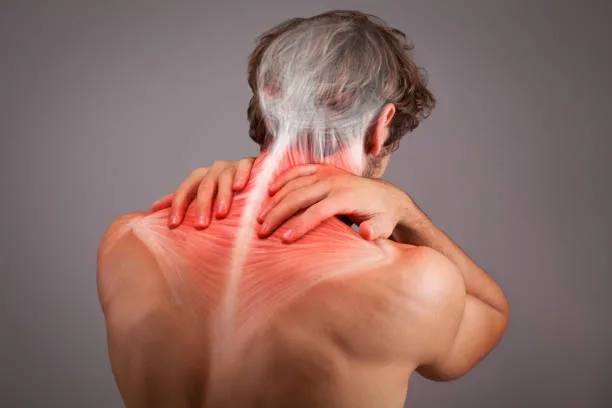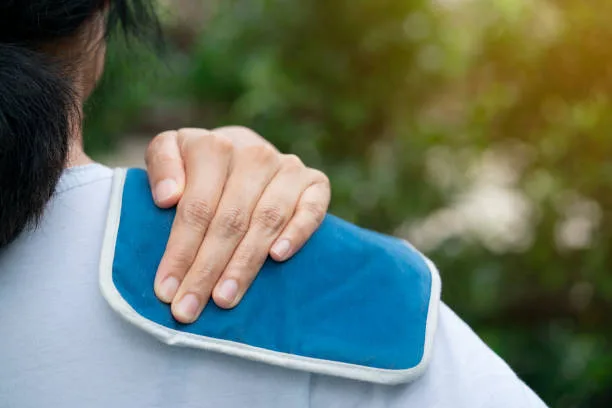What to know about muscle strain? 8 points

Hi friends, today I’m bringing you the topic “What to know about muscle strain? 8 points”.
let’s start,
- Symptoms
- Reasons
- Appraisal
- Treatment
- Prevention
- Recovery times
- When to see a doctor
- viewpoint
so friends Let’s dive into the depth of the topic “What to know about muscle strain? 8 points“.
A muscle strain occurs when a muscle is overstretched or overworked. People can often treat muscle strains at home and use specific exercises to speed up their recovery.
The severity of the muscle strain depends on how much damage is done to the muscle fibers. Strains range from mild overexertion to partial or complete muscle rupture.
In many cases, home care and exercises can resolve muscle strains, but severe strains may require medical treatment.
People can develop muscle strains by playing sports, doing physical work, or just participating in everyday activities. Early recognition and treatment of injury will speed recovery.

Symptoms
Muscle tension can cause aches and pains in the affected area.
Muscle tension can cause a variety of uncomfortable symptoms, including:
Wound
Muscle aches
Difficulty moving muscles
Muscle spasms
Muscular weakness
Pain, which is usually worse with movement
swelling
A person may also hear an audible snapping or popping sound when the muscle is tense.
Reasons
A strain occurs when a person overstretches a muscle, overuses a muscle, or experiences an accident, such as a fall.
Those with tight, flexible muscles and those who do not warm up properly before exercise are at greater risk of muscle strain.
Some people whose jobs require them to move frequently, such as heavy lifting or sports, may develop chronic muscle strain injuries.
Appraisal
If a doctor suspects a muscle strain, they will do a physical exam and ask about a person’s history of symptoms. They may also order imaging studies, such as X-rays, to make sure the bone isn’t broken.
As part of the evaluation, a doctor will usually designate the injury as a grade 1, 2, or 3 strain. A grade 1 strain is mild and should heal quickly, while a grade 3 strain is a severe tear of the muscle.
in topic “What to know about muscle strain? 8 points” will talk about treatment.
Treatment
How to treat muscle tension
Even if a person’s muscle strain does not require medical attention, it is important to rest the muscle and allow time for recovery. A strained muscle is more prone to re-injury.
Home Remedies
A person can apply an ice pack to help reduce swelling.
Several home remedies can help promote muscle healing. One of the most effective methods for muscle tension rehabilitation is the RICE technique.
Rest:
Resting injured muscles gives the body time to heal.

Ice:
Applying a cloth-covered ice pack to the affected muscle for 10 to 15 minutes at a time can help reduce swelling and inflammation.
Compression:
If possible, apply a compression bandage to reduce swelling. People can use cloth or elastic bandages from drugstores or online stores to wrap an injured foot, ankle, leg, wrist, or arm.
Elevation:
Elevating the injured arm or leg can help reduce swelling and allow fluid to flow back to the heart.
Learn more about the RICE method here.
In addition to using the RICE method, a person may take medication to control pain and reduce swelling or inflammation.
Over-the-counter (OTC) nonsteroidal anti-inflammatory drugs (NSAIDs), such as ibuprofen and naproxen, reduce both pain and inflammation. Acetaminophen can relieve pain, but it does not have the anti-inflammatory properties of NSAIDs.
Would you like to read: https://drreactivate.com/fitness-journey-for-beginners-at-home/

Medical treatment
If OTC medications are insufficient to relieve pain, a doctor may prescribe stronger anti-inflammatory medications, muscle relaxants, or pain relievers.
Massage therapy can also help relax injured muscles and increase a person’s range of motion.
Recovery exercises
If a doctor clears a person to engage in regular exercise after their injury, they can usually benefit from stretching exercises. It’s important to talk to a doctor before doing any recovery exercises, as overexerting an already injured muscle can cause additional damage.
A person should never stretch to such an extent that it causes pain and discomfort.
Specific stretches will depend on the injured area, but a person should always repeat the stretch two or three times. Examples of these sections include:

1. Hamstring stretch
Tight hamstrings can make walking and running difficult and increase the risk of injury.
To stretch the hamstrings, stand with feet hip-width apart, and bend forward at the waist. There should be a slight stretch in the back of the legs.
For tight hip muscles, lie flat on your back and pull your right knee toward your chest. Hold for 10 to 15 seconds before straightening the leg again. Repeat with the left leg, feeling the stretch in the upper thighs and hips.
3. The neck is stretched.
To tense neck muscles, tilt the head forward to try to touch the chin to the chest. Next, tilt the head first to the left and then to the right, trying to touch the ear with the shoulder.
Would you like to read: https://drreactivate.com/tabata-exercise/
Prevention
People can prevent muscle strain by warming up before physical activity and avoiding excessive muscle stretching.
Following the guidelines below can help prevent muscle strain:
Walk at a moderate pace for 3 to 5 minutes before doing any sports or other physical activity. Doing this will warm up the muscles and prepare them for increased activity intensity.
Follow a healthy diet and exercise program to maintain a healthy weight. Excess weight can put extra stress on the muscles, making them more likely to develop muscle strains.
Lift heavy objects or objects carefully and always use proper technique. It is very important to lift with the legs rather than the back and carry any heavy loads with the torso to avoid straining the arm or back muscles.
Wear shoes that provide stability and ensure that any other safety equipment fits properly and is in good condition.
Some people may benefit from working with a physical therapist or strength and conditioning professional to improve their exercise technique and allow them to safely build strength and flexibility.
Recovery times
The recovery period after a muscle strain will depend on the severity of the injury.
Most soft tissue injuries take a few weeks to heal, but severe strains can take longer.
Trying to return to normal activities too soon can cause further injury, so always follow your doctor’s instructions and start slowly.
If a person’s injury requires surgery, recovery time will depend on the nature of the procedure. A doctor will be able to provide information about the likely time frame for recovery after surgery.

When to see a doctor
If a person has a serious injury, a doctor should be consulted.
It is important to see a doctor for any painful muscle strain to get an accurate diagnosis and proper treatment.
If a person hears a popping sound when injured, this may indicate a muscle tear. Tears are a serious strain that will require medical attention.
If the injury makes the pain worse rather than better, it may indicate that a person should seek medical attention.
Other symptoms that indicate the need to see a doctor include:
Severe swelling that makes it difficult to move the injured area.
Difficulty bending or straightening the affected area
Significant injury
People should see a doctor if their injury prevents them from completing their normal physical activities.
let’s see the viewpoint of the topic “What to know about muscle strain? 8 points“.
viewpoint
Muscle tension can range from mild to severe. Taking time to rest and recover from strained muscles can help a person recover and return to their previous level of physical activity. Doing some simple stretching exercises with a doctor’s approval may also be beneficial.
If the pain worsens or interferes with daily activities, it is best to see a doctor.
I hope this topic “What to know about muscle strain? 8 points” is useful for you.
conclusion
What to know about muscle strain? 8 points
In conclusion, understanding muscle strain is crucial for maintaining overall health and preventing injuries during physical activities. Whether you’re an athlete, a fitness enthusiast, or someone leading a sedentary lifestyle, being aware of the causes, symptoms, and treatment options for muscle strain can contribute to a healthier and more active life.
Remember to prioritize proper warm-ups, maintain good posture, and listen to your body to reduce the risk of muscle strain. In cases where strain does occur, timely and appropriate management, including rest, ice, compression, and elevation, can facilitate a quicker recovery. Always consult with a healthcare professional for personalized advice based on your specific situation.
FAQs
Can I continue exercising with a muscle strain?
It’s advisable to rest and avoid strenuous activities to prevent further damage. Consult with a healthcare professional for personalized advice.
How long does it take to recover from a muscle strain?
Recovery time varies based on the severity of the strain. Mild strains may heal in a few days, while severe strains can take weeks or months.
When should I seek medical attention for a muscle strain?
If you experience severe pain or swelling, or if the strain significantly affects your daily activities, consult a healthcare professional promptly.
How is muscle strain diagnosed?
Diagnosis is typically based on a physical examination, medical history, and, if necessary, imaging studies such as MRI or ultrasound.
What is the RICE method for treating muscle strain?
RICE stands for Rest, Ice, Compression, and Elevation. It is a common method used to manage muscle strain and promote healing.
When should I see a doctor for muscle strain?
If the pain is severe, persists despite home treatment, or if there is significant swelling and bruising, it’s advisable to consult a healthcare professional.
Can muscle strain be prevented?
Yes, preventive measures include proper warm-up before exercise, maintaining good posture, using proper techniques during physical activities, and incorporating strength and flexibility exercises into your routine.
How long does it take to recover from muscle strain?
Recovery time varies depending on the severity of the strain. Mild strains may heal in a few days with rest and home care, while more severe strains may take several weeks. It’s important to follow a gradual return to activity to avoid re-injury.


3 thoughts on “What to know about muscle strain? 8 points”